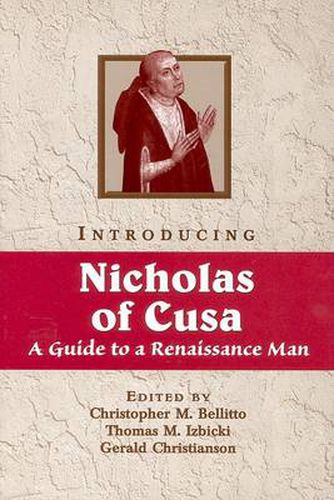Readings Newsletter
Become a Readings Member to make your shopping experience even easier.
Sign in or sign up for free!
You’re not far away from qualifying for FREE standard shipping within Australia
You’ve qualified for FREE standard shipping within Australia
The cart is loading…






Nicholas of Cusa (1401-1464) was one of the most illustrious figures of the fifteenth century –a man whose imagination spanned the late Middle Ages and the Renaissance to point the way to modernity. Theologian, philosopher, canon lawyer, reformer, church statesman, and cardinal, Cusanus’ ideas of learned ignorance and the coincidence of opposites still attract attention today across a wide variety of disciplines. However, there is no one book in the marketplace that explains to a general audience all the different facets of this Renaissance man. This book, which might be considered Nicholas of Cusa 101, offers separate chapters for the non-specialist introducing the vocabulary, ideas, and works of Nicholas of Cusa on a wide variety of topics. The book also provides a guide to his works in Latin, English, and other languages; all the secondary literature on each topic treated; a glossary of Cusan terms and ideas; and a guide to Cusan societies, sites, libraries, and museums.
$9.00 standard shipping within Australia
FREE standard shipping within Australia for orders over $100.00
Express & International shipping calculated at checkout
Nicholas of Cusa (1401-1464) was one of the most illustrious figures of the fifteenth century –a man whose imagination spanned the late Middle Ages and the Renaissance to point the way to modernity. Theologian, philosopher, canon lawyer, reformer, church statesman, and cardinal, Cusanus’ ideas of learned ignorance and the coincidence of opposites still attract attention today across a wide variety of disciplines. However, there is no one book in the marketplace that explains to a general audience all the different facets of this Renaissance man. This book, which might be considered Nicholas of Cusa 101, offers separate chapters for the non-specialist introducing the vocabulary, ideas, and works of Nicholas of Cusa on a wide variety of topics. The book also provides a guide to his works in Latin, English, and other languages; all the secondary literature on each topic treated; a glossary of Cusan terms and ideas; and a guide to Cusan societies, sites, libraries, and museums.